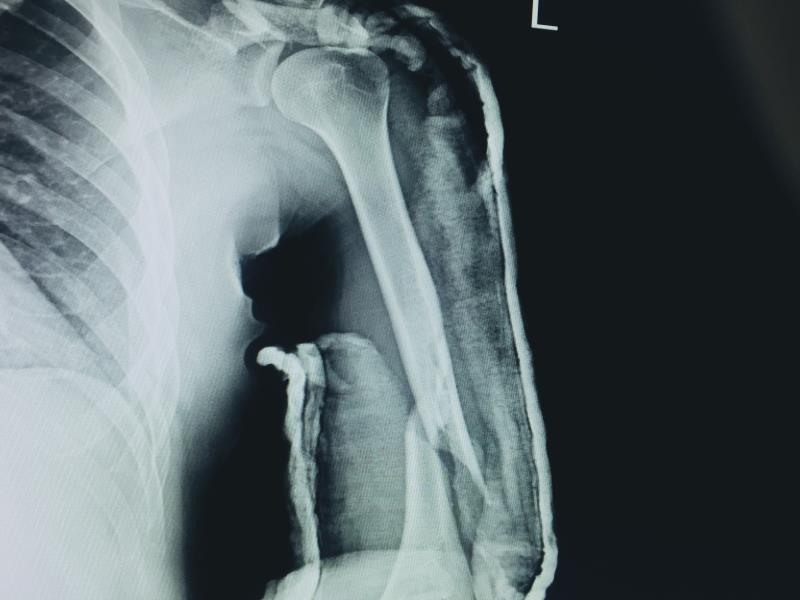Surgery no better than bracing for humeral fractures





Internal fixation surgery did not significantly improve functional outcomes in patients with closed, displaced humeral shaft fractures compared with nonoperative functional bracing, the FISH* trial has shown.
Humeral shaft fractures have been historically managed nonoperatively (eg, splints, casts, functional bracing). [J Bone Joint Surg Am 1977;59:596-601] The high incidence of nonunion could have driven the steady increase in the rates of surgery (up to 60 percent) over the past two decades, without quality evidence to justify the trend, noted the researchers. [J Bone Joint Surg Am 2017;99:583-592; J Orthop Traumatol 2017;18:259-263]
“[We found that] surgery, compared with functional bracing, did not result in improved upper extremity function at 12 months,” they said. This was evident in the nonsignificant difference in DASH** scores between the surgery (ie, ORIF***) and the bracing arms (mean, 8.9 vs 12.0 points; difference, 3.1 points; p=0.34). [JAMA 2020;323:1792-1801]
Seven minor adverse events (AEs) occurred with ORIF, including three cases of temporary secondary radial nerve palsies (all resolving within 12 months), and two cases of superficial wound infections treated with oral antibiotics. These are consistent with previously reported AEs tied to surgery. [J Shoulder Elbow Surg 2015;24:e307-e311; PLoS One 2017;12:e0173634]
Eighty-two patients (mean age 48.9 years, 46 percent female) from two university hospital trauma centres in Finland were randomized to undergo surgical treatment with standard ORIF using plate and screws (n=38), or nonsurgical treatment with functional bracing (n=44). Of those who received bracing, 11 patients developed nonunion. Thirteen patients in the bracing arm eventually underwent operative repair of the fractures during the 12-month follow up period to promote healing.
Despite the nonsignificant difference in upper extremity function between the two arms, the findings appear to favour initial surgery, given the faster and more predictable course of recovery as opposed to functional bracing, noted the researchers. “This contention is based on the trajectories of outcomes and the high incidence of crossovers from functional bracing to surgery due to AEs.”
However, the faster recovery following ORIF needs to be weighed against the inherent risks and resources required for surgery, the researchers noted. Despite the crossovers, approximately 70 percent of patients receiving functional bracing still healed uneventfully.
“At an individual patient level, the findings support shared decision-making. Practitioners need to ascertain that patients’ values and preferences are respected while ensuring that patients are fully informed and capable of weighing the trade-off between the potential benefits and risks related to both treatment options,” explained the researchers.
The findings however may not be applicable to all types of displaced humeral fractures, owing to the exclusion of patients with more complex injuries#. Upon completion, the results of two ongoing randomized trials may shed light on the comparative efficacy of surgical and nonsurgical approaches in managing humeral shaft fractures. [https://clinicaltrials.gov/ct2/show/NCT00878319, accessed May 28, 2020; Trials 2019;20:475]